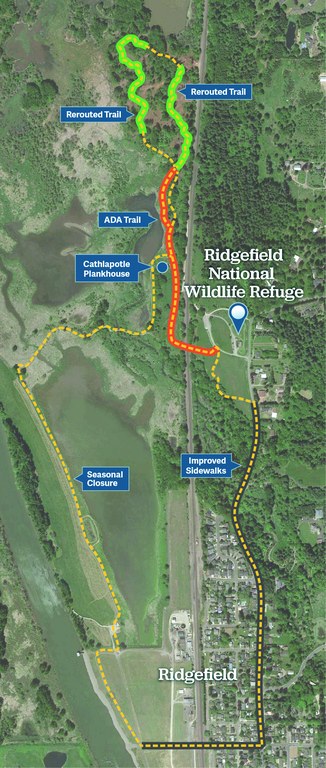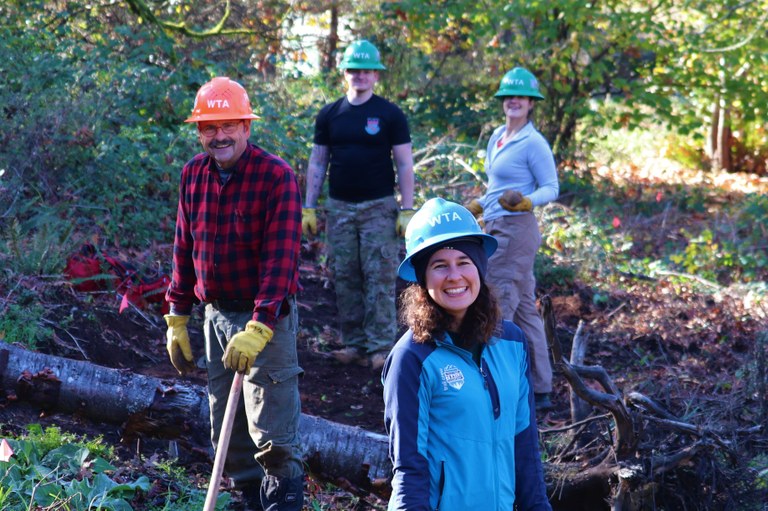Bringing Nature Closer to Home in Southwest Washington
WTA has been helping to make Ridgefield National Wildlife Refuge into an easily accessible bit of nature. Thanks to a new path that offers a safe walking route, hikers now have two different ways to walk to the refuge from downtown Ridgefield. And those two routes can even be combined to create a 5-mile loop.
By Ryan Ojerio
For the last couple of years, WTA has been helping make Ridgefield National Wildlife Refuge into an easily accessible bit of nature. The area is a great example of our Trail Next Door campaign, which aims to bring natural spaces closer to our daily lives. This project has also shown the power of traditional ways of managing the landscape.

Thanks to a new path that offers a safe walking route, hikers now have two different ways to walk to the refuge from downtown Ridgefield. And those two routes can even be combined to create a 5-mile loop. (Note: If you’d like to do the loop, you’ll now need to wait until the Carty Lake Trail reopens in May.)
The most recent change is a complete rebuild of the Oaks to Wetlands loop trail that forms the sweet circle atop the lollipop loop hike where the stem (a paved 0.5-mile ADA-accessible trail) ends. Thanks to financial support from WTA’s members, our staff and volunteers were able to redesign and rebuild the 0.75-mile section, including extensive reroutes that were finished in August.
Visitors will also notice that the removal of evergreen trees dramatically opened up the once-dense forest. Birds such as the oak titmouse, acorn woodpecker and ash-throated flycatcher suddenly have more of their favored habitat and the Oregon white oaks have room to stretch their limbs as their ancestors have for generations. The Cowlitz Tribe moved the recently logged trees to a tributary of the Columbia River downstream from the refuge, where they enhanced fish habitat.
The trail project was a collaborative effort between the refuge and WTA staff, who outlined the concept and design parameters, and our volunteer leaders, including crew leader Elaine Keavney.

A WTA volunteer crew smiles at the camera during a day of work at Ridgefield. Photo by Mesha Wood.
Now that the route is set, the next phase of trail work will include reconstructing a short boardwalk and planning interpretive stops along the trail. For now, temporary signs highlight the oak restoration plan. At first glance, it may look like a simple timber harvest, but these educational stops tell a more complex story, one that’s still unfolding. For generations, Native cultures like the Cowlitz Tribe used fire to maintain the oak savannah and depended on the berries, nuts, tubers and game animals found there. All of that changed in the 1800s and 1900s as immigrants flocked to the area and evergreens took over the landscape.
We’re proud that the work at Ridgefield is restoring a small part of the traditional oak landscape for current and future generations to enjoy.


Comments